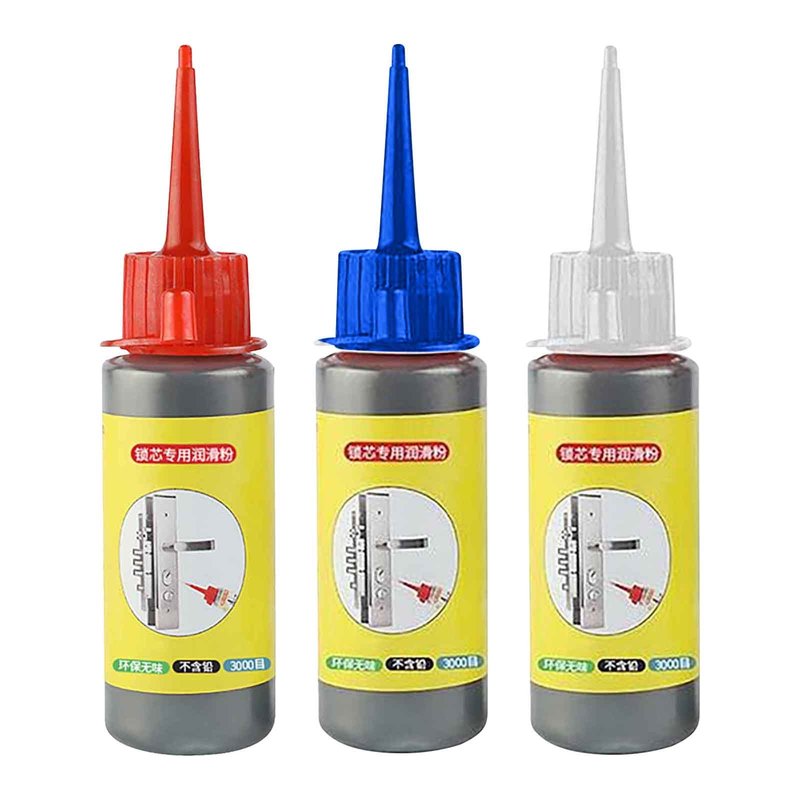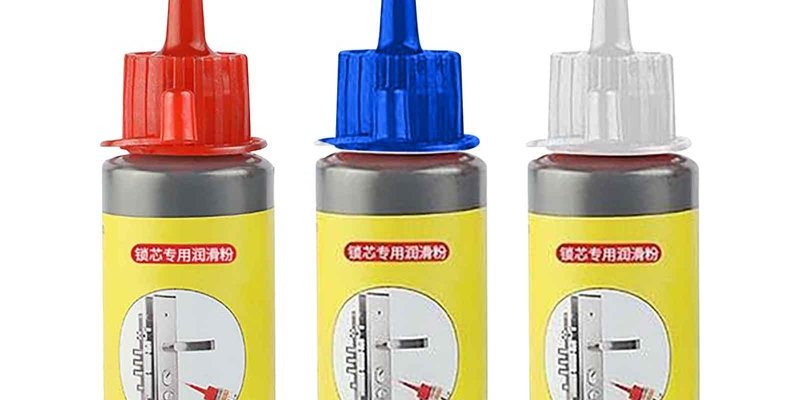
Here’s the thing: picking the *best lubricant for deadbolt tumbler pins* isn’t just about grabbing the nearest can of oil from your garage. Each deadbolt (think brands like Schlage, Kwikset, or Yale) has tiny, sensitive pins inside that demand a clean, slick lubricant—one that won’t turn gummy, attract dust, or build up over months. Get it right and your lock will last longer, work smoother, and even resist freezing or corrosion. Get it wrong, and you’ll find yourself fighting your front door, or worse, calling a locksmith.
Why Deadbolt Tumbler Pins Need Special Lubricants
Let me explain what’s actually going on inside your deadbolt. Picture dozens of tiny metal cylinders—the tumbler pins—lined up in rows, shuffling into place every time you slide your key inside. These pins need to move freely up and down, syncing perfectly for your lock to open smoothly. If they gum up, even a slick new key won’t help you.
Most folks think any lube is better than none, but that’s just not true. Some oils get sticky over time or attract dust, which leads to more clogging and harder turns. It’s sort of like pouring syrup into a watch—things might move at first, but soon, everything gets stuck. That’s why professional locksmiths insist on *non-residue lubricants*. These don’t leave behind heavy oils or gunk, but instead, keep the lock moving cleanly, without a mess.
You might be wondering: “Why not just use WD-40?” While it’s famous, WD-40 isn’t really a lock lube. It can clean out grime but often leaves a thin film that gums up pins later. When you’re picking the right product, you want something designed for the tight spaces and delicate metal-on-metal action inside a tumbler lock.
What Makes a Lubricant “Non-Residue”?
A lot of packaging promises “non-staining” or “won’t attract dirt,” but let’s break down how *non-residue lubricants* really work. The secret is in their base formula. Unlike typical oils or greases, non-residue lock lubricants are usually dry, evaporative, or silicone-based. They go on wet for easy application but dry fast—leaving almost nothing behind except a slick, invisible film.
What you don’t want is a residue that collects lint, dust, or grime. In a lock, even a tiny buildup can throw off the code that lets the pins line up, making your key stick. That’s why pro locksmiths almost always skip oily or greasy stuff for pins. Think of it like cleaning eyeglasses: you want them clear, not smeared with fingerprints. Non-residue lubes keep everything free-moving and transparent inside the lock.
You’ll often see dry *PTFE sprays* (Teflon-based), graphite powders, or ultra-light silicone sprays topping the list. Each type has its own way of staying slick but not sticky, and most importantly, they won’t turn into a problem six months later. That’s what makes them perfect for deadbolts, where set-and-forget is the goal.
Top Lubricants for Deadbolt Tumbler Pins
If you’re standing in the hardware aisle feeling lost, here are a few tried-and-true picks that locksmiths trust for deadbolt pins:
- DuPont Teflon Dry Film Lubricant: This dry spray applies easily and leaves behind a slick Teflon coating. Once it dries, it repels dust and won’t gum up, even in tough weather.
- 3-IN-ONE Lock Dry Lube: Specifically made for locks, this formula dries quickly and keeps pins moving smoothly—without staining or leaving much behind.
- Houdini Lock Lube: A favorite among locksmiths. Houdini is solvent-based and evaporates, leaving only a thin lubricating film. It’s great for restoring sticky, old locks too.
- Graphite Powder: The classic, time-tested choice. A little puff into the keyhole lets the fine graphite coat the pins. It’s non-residue, but a tad messier to apply than sprays.
Each of these has its pros and minor quirks. For most home users, Teflon or silicone-based dry sprays strike the right balance of easy application, long-lasting slickness, and true non-residue performance.
Honestly, you’ll never catch a pro locksmith squirting regular household oil into a deadbolt—that’s a surefire way to need a reset sooner than later!
How To Lubricate Deadbolt Tumbler Pins Safely
You might be wondering how to actually apply these lubricants without messing up your lock (or your doorknob). Here’s a simple step-by-step that gets the job done cleanly:
- Step 1: Choose your lubricant (preferably a dry Teflon spray or graphite powder).
- Step 2: Insert the nozzle or straw into the keyway. If you’re using powder, you can use the built-in nozzle or a puffer bulb.
- Step 3: Give a short, controlled burst—don’t flood it. You don’t need much.
- Step 4: Insert your key, then work it in and out several times. This moves the lubricant through all the tumbler pins, syncing with the inner workings.
- Step 5: Wipe off any excess from the key or lock face with a paper towel.
Let me explain why less is more: If you overdo it, even dry lubricants can collect in clumps or spray out onto surrounding hardware. You’re aiming for a thin, even film—like misting a window, not hosing down a car. The goal is to help every tumbler pin pair and reset smoothly, not to soak the lock.
What To Avoid: Common Lubricant Mistakes
It’s tempting to grab whatever lube is at hand, especially if your lock is already sticking. But some of the most common “fixes” can actually create bigger problems down the line. Here’s what you should *not* use:
- WD-40: While it works in a pinch to clean and free up stuck pins, it leaves a sticky residue that only attracts more dirt over time. In a few months, you’ll be back at square one—if not worse.
- Household Oils (like 3-IN-ONE Multi-Purpose): These are too thick for tiny lock pins. They can gum up, attract dust, and eventually cause jams.
- Silicone Grease: Grease is too heavy and traps debris. Fine for hinges, terrible for the delicate codes inside a deadbolt.
- Automotive Oils: Not formulated for small tolerances in locks and can make things messy fast.
It’s like fixing a watch with engine oil—it sounds like it should help, but the parts are just too sensitive. Stick to non-residue lock lubricants designed for the job.
Comparing PTFE, Graphite, and Silicone: Which Is Best?
You might be stuck between dry PTFE spray, graphite powder, and dry silicone options. So, which is the best lubricant for deadbolt tumbler pins? Each one works, but they shine in slightly different ways.
- PTFE (Teflon) Sprays: These go on wet and evaporate fast, leaving a thin, long-lasting dry film that resists dirt and moisture. They’re easy to apply and mess-free. Ideal for modern locks, especially in outdoor or humid settings.
- Graphite Powder: Completely dry, never sticky, and time-tested. It’s easy to over-apply, and the powder can get on your keys or hands, but it’s unbeatable for keeping pins moving without residue. Excellent for older or precise mechanisms.
- Dry Silicone Sprays: Less common for locks, but some brands offer silicone-based formulas that work similarly to PTFE. Silicone lubricates well and resists temperature extremes, but can be a little “squeakier” feeling in the lock.
If you live where dust is a problem, PTFE or graphite is the safer bet. For maximum moisture resistance (think coastal or damp places), PTFE edges out. Honestly, you can’t go wrong as long as you *don’t* use anything oily or greasy.
How Often Should You Lubricate Deadbolt Pins?
Regular maintenance makes a huge difference, but it’s easy to overdo it. Here’s what most locksmiths recommend:
- Every 6–12 months: Give your locks a quick spritz or puff, especially before winter or rainy seasons.
- Whenever you notice sticking or grinding: Don’t wait until your key is stuck halfway—apply lubricant at the first sign of trouble.
- After cleaning or resetting your lock: If you remove your lock for code changes or deep cleaning, lubricate it before reinstalling to make sure everything moves freely.
It’s about setting a routine—sort of like changing your HVAC filter or resetting your remote batteries. Preventative care always beats troubleshooting a total jam.
Alternative Methods and Troubleshooting Tips
Sometimes, lubrication alone isn’t enough. If you’re still having problems after using the best lubricant for deadbolt tumbler pins, try these extra steps:
- Blow out the keyway: Use compressed air to clear dust and debris before lubing—it helps the lubricant reach every pin.
- Check the key: Worn-out or bent keys won’t line up the pins correctly, no matter how slick your lock is. Try a fresh key if things still stick.
- Reset or re-code the lock: For digital or hybrid deadbolts, sometimes syncing or resetting the locking mechanism can solve chronic sticking that lube alone can’t fix.
- Try a lock de-icer: In cold climates, a de-icing spray before your lube can help by clearing out moisture and old buildup.
If none of these work, you may be dealing with a worn-out lock cylinder or broken parts inside, and it’s probably time to call a pro.
Final Thoughts: Choosing the Right Lock Lubricant Matters
When you take a little time to pick the *best lubricant for deadbolt tumbler pins*, you save yourself future headaches—from stiff keys to expensive lockouts. Whether you’re syncing up an old Kwikset or keeping your Schlage running like new, the right non-residue lube keeps everything moving clean and easy.
Just remember: Always skip oily, greasy products and stick with a dry Teflon spray or graphite powder for the best results. Apply lightly, maintain your locks regularly, and you’ll keep your deadbolt’s code working—no troubleshooting or reset calls needed. A smooth lock isn’t just satisfying—it’s one less thing to worry about, every time you walk through your door.
